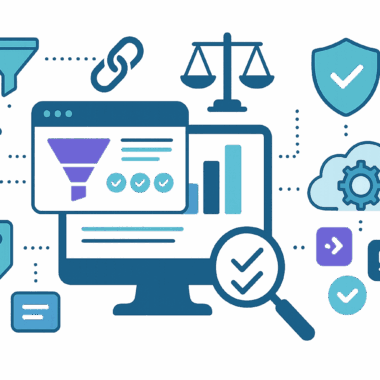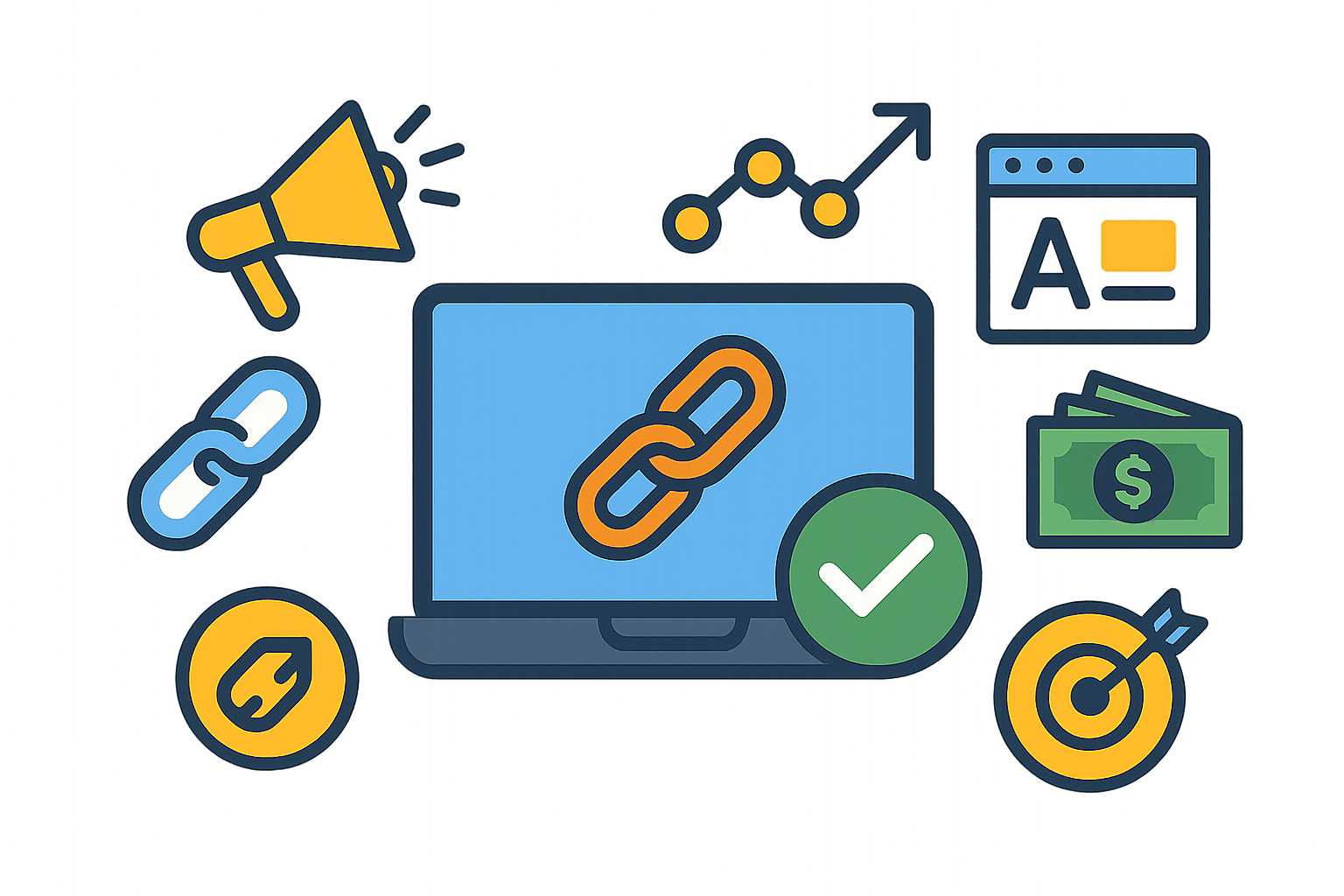

How to Choose the Right Affiliate Tracking Platform for Your Business

Content:
- Define Goals & Constraints
- Core Features & Usability (Baseline Checklist)
- Attribution & De-duplication
- Integrations & Data Flow
- Reliability & Support SLAs
- Security, Privacy & Fraud Prevention
- Pricing, Contracts & ROI
- Conclusion
- FAQ
Selecting the affiliate tracking platform that underpins your program determines how accurately revenue is attributed, how efficiently partners are paid, and how quickly you can scale. A weak tracking stack inflates acquisition costs through double counting, missed de-duplication, and fraud leakage; a strong one delivers defensible data, faster operations, and clean incrementality. This guide explains what to evaluate and how to reduce vendor choices to an objective score.
The article follows a practical structure used by performance teams during RFPs and pilots. You will define outcomes, test attribution models, validate integrations end-to-end, review SLA and security controls, and build a pricing/ROI view that survives legal and finance review. Every section includes concrete evaluation points you can paste into an internal checklist.
Define Goals & Constraints
Start with business outcomes before looking at feature grids. Clarify the commercial goal (new customer acquisition, lead generation quality, average order value, subscription retention), the channels to be included, and the measurement granularity you require. Document non-negotiables such as real-time conversions for finance, or monthly cohort reporting for the BI team. Write these as acceptance criteria so vendors can confirm support during demos.
Quantify constraints early. Specify target volumes (clicks per day, conversions per month), number of active partners, countries, currencies, payout rules, and the enforcement level for taxes and invoicing. Capture regulatory requirements (e.g., GDPR, CCPA), data residency expectations, and any restrictions for PII handling. Defining scope precisely shortens your shortlist and prevents scope creep during procurement.
Prioritize with a short, ordered list:
- Primary KPI: CAC/LTV, CPA margin, or validated incremental revenue.
- Program type: ecommerce, SaaS trials to paid, lead gen with qualification.
- Partner mix: content, influencers, coupon/loyalty, sub-networks, media partners.
- Compliance scope: brand bidding policy, coupon controls, restricted geos.
- Scale expectations: peak traffic, seasonal campaigns, planned internationalization.
Core Features & Usability (Baseline Checklist)
Your platform must capture the entire conversion path without adding friction for partners. Verify click and conversion tracking, server-to-server postbacks, cross-device tracking, and cross-domain handling. Ensure link building is simple, parameters are flexible, and deep links are supported. Reporting should be real-time or near real-time with export to CSV, S3, or API for daily pipelines.
Operational usability drives adoption. Look for an intuitive partner portal, bulk offer creation, templated commission rules, and audit trails for every critical change. Confirm that teams can create and pause offers, adjust rates, and upload creative assets without engineering tickets. Ask to see a typical weekly workflow from a partner manager’s perspective.
- Click tracking, conversion pixels, and S2S postback support.
- Flexible commission engine (SKU/category rules, new vs returning customer logic).
- Partner portal with link builder, coupon assignment, and creative management.
- Real-time dashboards; scheduled exports and robust, documented APIs.
- Role-based access control, approval flows, and activity logs.
- Localization: currencies, time zones, and multi-language UI.
Attribution & De-duplication
Attribution determines who gets paid and which channels you scale. Review built-in attribution models (last click, first click, position-based, time-decay, data-driven) and the ability to customize lookback windows by partner type. Confirm that the system records assisted interactions, exposes path data, and supports multi-touch rules that you can defend to finance and analytics stakeholders.
De-duplication protects margin. Require configurable rules across channels—particularly paid search, paid social, and email—so the same conversion is not counted twice. Validate deterministic logic (e.g., order ID as a unique key) and probabilistic tie-breakers. Test edge cases: coupon applied without a click, multiple clicks within seconds, and conversions after consent changes. Your pilot should include at least one scenario for each rule.
Model validation steps:
- Define windows per partner type (e.g., 7 days for content, 1 day for coupon).
- Set priority rules between owned channels and affiliates.
- Enforce unique conversion IDs to prevent replay.
- Compare platform paths with analytics/BI to confirm parity.
- Document exceptions and the finance rationale behind them.
Integrations & Data Flow
A modern program lives or dies on integrations. Confirm native plugins for ecommerce/CMS (Shopify, Magento, WooCommerce), subscription billing (Stripe, Chargebee), mobile MMPs (Adjust, AppsFlyer), and analytics/CDP/BI stacks (GA4, Segment, BigQuery, Snowflake). Where a native connector doesn’t exist, ensure data can move through webhooks, SFTP, or a stable REST API with pagination and rate limits.
Map your architecture before demos. Define event payloads (click, view, conversion, approval, clawback), identity keys (customer ID, email hash), and destinations. Require test environments with production-like settings. Insist on clear retry logic for failed webhooks and transparent status/errors. Data contracts reduce surprises at launch and enable clean downstream reporting.
- Event schema documentation with versioning and changelogs.
- Idempotency keys to prevent duplicates on retries.
- Backfill options for historical transactions and partner migration.
- Scheduled ETL exports for finance and tax reporting.
- Strict rate-limit policies and monitoring endpoints.
Reliability & Support SLAs
Traffic spikes, seasonal peaks, and flash sales stress tracking systems. Demand transparent reliability metrics and verify them during pilot. Look for global redirect infrastructure (edge/CDN), sub-100 ms average redirect latency in your core regions, and explicit data latency targets for conversion reporting. Require a public status page, incident postmortems, and access to a sandbox that mirrors production behavior.
Support is part of reliability. Review SLA language for response and resolution times, named CSM coverage, and escalation paths. Evaluate documentation depth, training resources, and support coverage across time zones. Ask for references from businesses with similar traffic patterns and compliance requirements; confirm how the vendor handled their last major incident.
SLA metrics you should capture:
|
Area |
Metric |
Target for Mid-Enterprise Programs |
|
Uptime |
Monthly availability (excluding scheduled maintenance) |
≥ 99.9% |
|
Redirect performance |
Avg. click redirect latency (core regions) |
≤ 100 ms |
|
Data latency |
Time from conversion to UI/API availability |
≤ 5 minutes |
|
Webhook delivery |
Initial attempt + retry policy |
Attempt < 1 min; exponential backoff |
|
Support |
First response / P1 resolution |
≤ 1 hour / ≤ 8 hours |
|
Data retention |
Raw click/conversion logs |
≥ 24 months or contractually agreed |
Security, Privacy & Fraud Prevention
Your platform processes consumer data and financial payouts; it must prove strong security posture. Require SSO (SAML/OIDC), 2FA, SCIM user lifecycle management, IP allowlists, and granular permissions. Review results of third-party audits (SOC 2 Type II or ISO 27001) and verify signed DPA with clear sub-processor lists. Confirm data minimization practices, encryption in transit and at rest, and configurable retention policies.
Fraud erodes margin and damages partner trust. Assess in-product fraud prevention features: bot and click-spam detection, cookie stuffing identification, velocity and anomaly rules, brand-bidding enforcement, and coupon leakage controls. Ensure you can route suspicious traffic into manual review queues, export evidence for appeals, and automatically withhold payments pending investigation.
- Consent capture and propagation to tracking (CMP integration, TC string support).
- Geo/IP reputation checks and ASN filtering for data centers/proxies.
- Device fingerprinting with privacy-safe techniques and clear fallbacks.
- Blacklist/whitelist management and partner-level throttling.
- Immutable audit logs for compliance and dispute resolution.
Pricing, Contracts & ROI
Pricing varies widely: flat subscriptions, tiers by event counts, percentage of partner payouts, or hybrids that include premium modules (fraud, discovery marketplace, advanced attribution). Model traffic growth, seasonality, and partner expansion to surface overage exposure. Scrutinize feature gating across tiers and the true TCO including implementation services, historical data import, and ongoing support.
Tie price to value with a defensible ROI model. Quantify incremental revenue captured through improved de-duplication, fraud savings, and operational time saved from automation. Run a 2–4 week pilot with a representative partner mix and compare outcomes against your current baseline. Translate results into finance-friendly metrics such as net revenue lift, margin impact, and payback period.
Pricing and ROI checklist:
- Transparent event definitions for billing (what counts as a “conversion”).
- Overage rates, seasonality buffers, and annual prepayment discounts.
- Exit terms, data export rights, and migration assistance.
- ROI formula: ROI = ((incremental gross profit + fraud savings + ops time value) – all-in cost) / all-in cost.
- Sensitivity analysis for traffic spikes and international expansion.
Conclusion
Choosing an affiliate tracking platform is an operations and finance decision as much as a marketing one. Define strict acceptance criteria, test attribution logic under real traffic, and verify that integrations, security, and SLAs meet your risk tolerance. Use a structured scorecard that weights the factors above so the decision survives scrutiny from legal, security, and leadership.
Run a disciplined pilot: identical offers, known partners, and side-by-side reporting with your analytics stack. Measure de-duplication accuracy, fraud catch rate, and finance reconciliation speed. If the platform clears thresholds on reliability, data quality, and ROI, proceed to contract with explicit exit and data-export clauses to preserve optionality.
FAQ
Do I need both an analytics suite and an affiliate platform?
Yes. The analytics suite validates sitewide behavior and product performance, while the affiliate platform executes partner-level tracking, commissioning, approvals, and payments. Use the platform as the source of truth for payouts and reconcile totals with analytics and finance.
Pixel or server-to-server postback—what should I use?
Prefer server-to-server postback for resilience and privacy alignment. Keep a client pixel as a fallback for scenarios where server events fail. Validate both during QA and ensure idempotency via unique conversion IDs.
How long should a pilot run to be conclusive?
Two to four weeks works if you hit statistically meaningful volumes: thousands of clicks and hundreds of conversions per partner type. Include at least one campaign with heavy coupon usage and one with top-funnel content to test multi-touch and de-duplication.
What is a reasonable lookback window?
Use data from your category. Retail coupon traffic usually justifies 1–3 days; content partners often require 7–14 days; subscription trials may need 14–30 days. Shorten windows if you see high collision with paid search brand terms.
How do I protect against coupon leakage and brand bidding?
Assign unique codes per partner, enforce code whitelists at checkout, and enable automated brand-bidding detection. Route violations into manual review and withhold commissions pending resolution.

What Is Lead Distribution Software and Why Do You Need It?
Designed to automate and optimize the process of lead delivery, this technology eliminates inefficiencies and ensures each lead reaches the right destination at the right time. Whether you're operating in finance, real estate, SaaS, or lead generation, streamlining how leads are routed can directly impact your conversion rates and bottom line.





